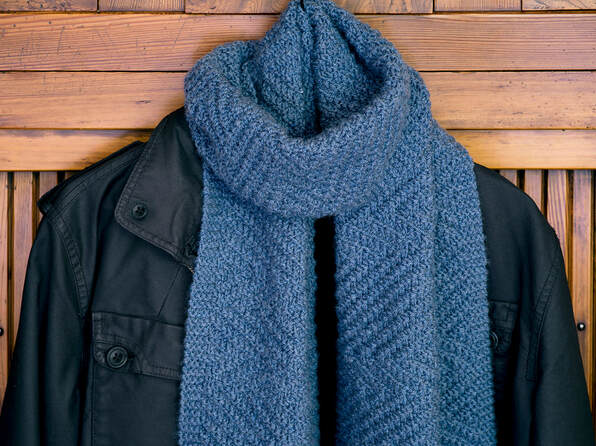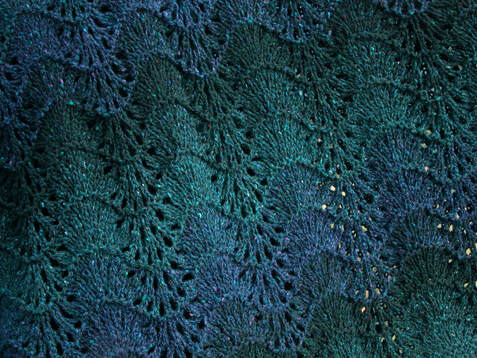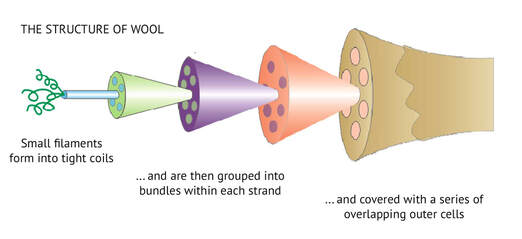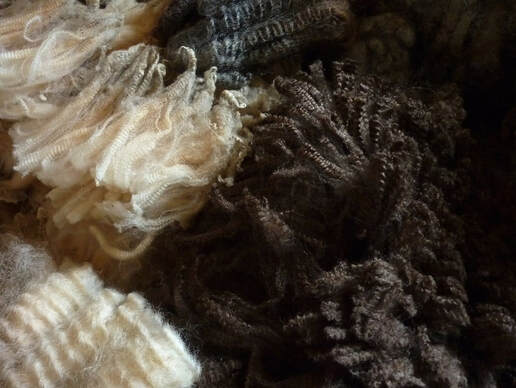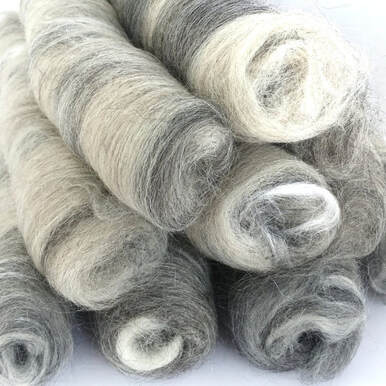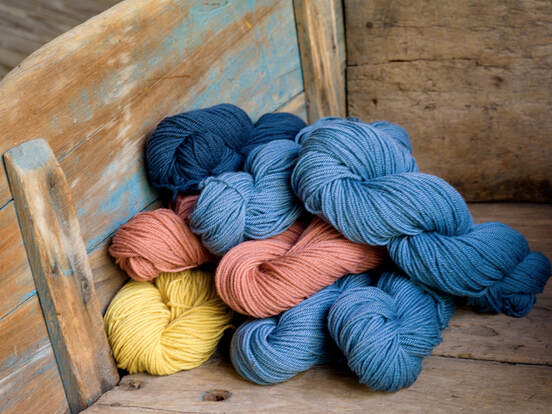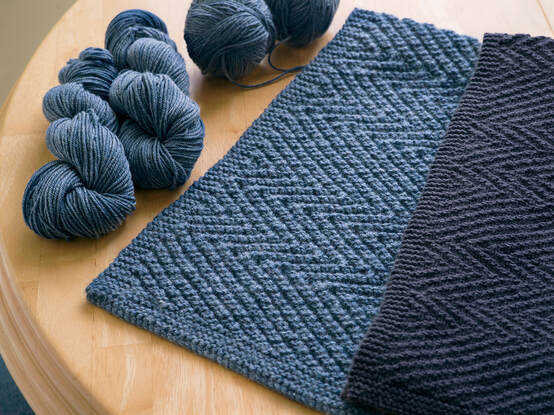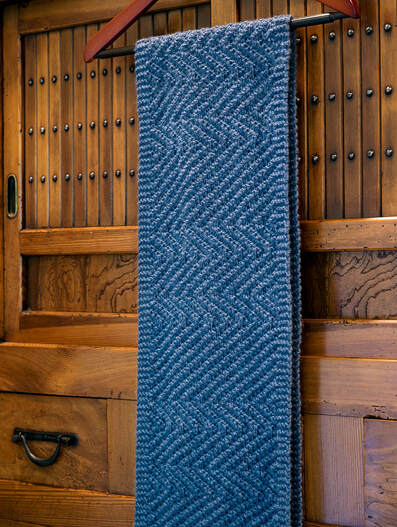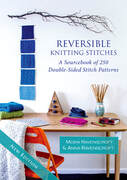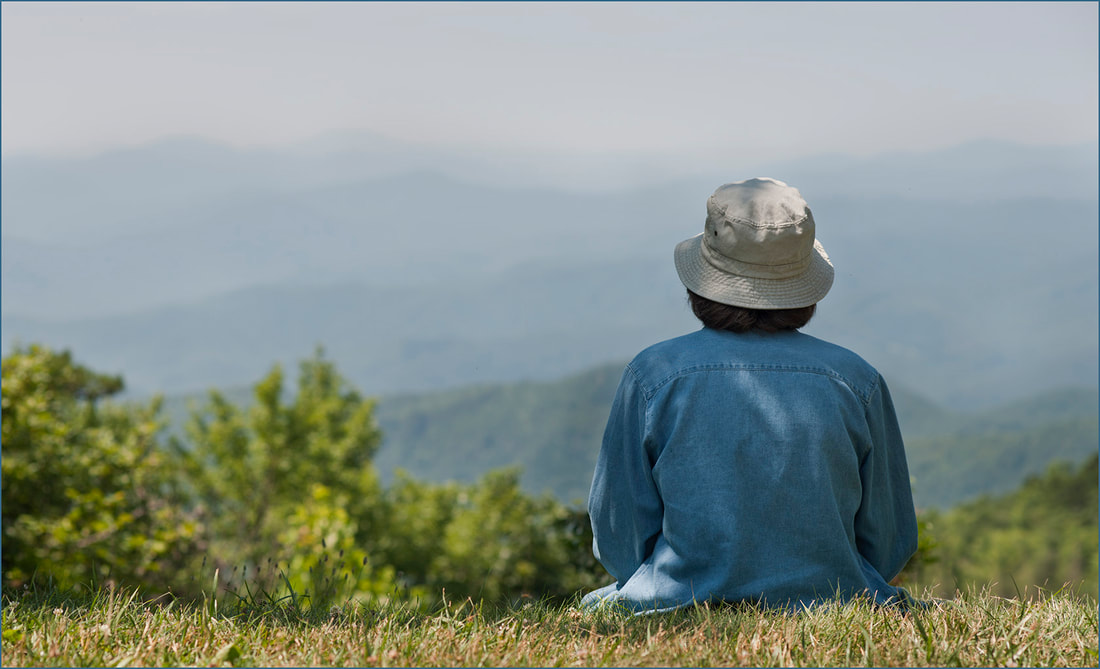I went hunting for some suitable wool but couldn’t find anything in the weight I wanted, so I looked at thinner yarns that I could double up. I had often done this in the past. In fact when I was younger that was a frequent occurrence as my local yarn store only really carried light-weight wool yarns, mostly for socks and skimpy cardigans.
However, as soon as I started to knit the shawl I noticed that it was gloriously warm to work. As it grew, I could feel the warmth on my lap, and when I tried it around my shoulders I felt instantly warmer. It was like magic.
So in this second blogpost in my new "Seeing Double" series, I would like to explore how we can use doubled-up yarns to add warmth to the finished item. If you would like to read the introductory blogpost to the series, please click here.
The Structure of Wool:
This outer layer has overlapping scales on the outside which gently hold the strands apart producing tiny cellular air pockets deep within the fibre.
Woollen vs Worsted Spinning:
In worsted spinning, the fibres are combed so they are better aligned and then spun to retain this smoothness. Worsted-spun yarns tend to be a little stronger with excellent draping characteristics and lustre but are typically a little denser and cooler.
You can usually tell the difference between these two methods of spinning when you look at a ball of yarn, as woollen-spun yarns have a matte appearance and feel lightweight, squishy and warm. If you're buying on-line then the website might tell you which method of spinning has been used.
However, you can also tell by looking at the description which might include words such as "light", "airy", "warm" or "springy", or they might speak about the yarn "blooming" after washing. You can see an example of a yarn blooming when washed in my blogpost here.
Using doubled yarns for extra warmth:
Recently I had a couple of requests from people asking me for a winter-weight version of the Lamberhurst Scarf pattern and my mind immediately turned to a yarn I had sampled for the first time last year. This is Quince & Co “Chickadee” which is a soft, warm, squishy sportweight yarn and you can read more about this yarn in an earlier blogpost here.
I selected a lovely denim blue colour called “Kyanite” and saw that the recommended gauge on the ball band was 26 sts:10cm/4 ins. This is a typical gauge for Sportweight yarns which are usually in the 24-26 sts:10cm/4 ins range.
So if you have been thinking about knitting something for the deep winter, then consider using two thinner yarns worked together to add warmth to the finished article.
Next Time . . .
I will come back to yarn weights next time and show how they can be a starting point to expanding your range of yarn options when you are thinking about your next project.
In the meantime, if you would like to read more about the Lamberhurst Scarf pattern, then please click here. The reversible Chevron Stitch pattern used for this scarf was taken from our book "Reversible Knitting Stitches”, and you can find more information about that here.
Until next time – keep safe and keep smiling,
Moira
| Last Blogpost: Seeing Double #1 – A new blogpost series on knitting with two ends of yarn Next Up: Seeing Double #3 – It's good to have options Our book: Reversible Knitting Stitches My Website: www.wyndlestrawdesigns.com |
The Structure of Wool diagram was adapted from "The Hierarchy of Wool", www.sciencedirect.com
Photo of wool samples was taken from www.spinningshepherd.com
Photo of rolags from www.albaranch.net
All other photos by Moira Ravenscroft or Tim Ravenscroft
two ends of yarn held together, scarf, scarves, wool, warmth, insulation, woollen spinning, worsted spinning,

